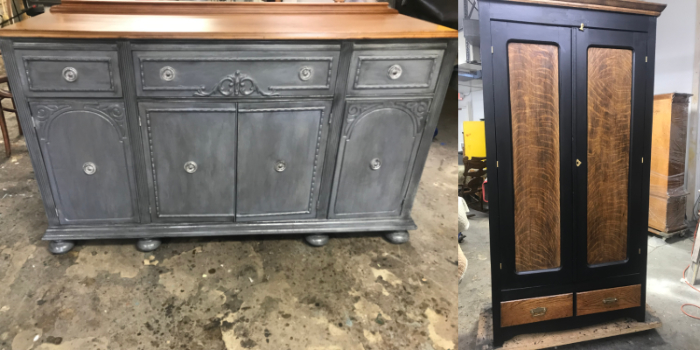Youth Unleashed
Exploring the vibrant voices and trends shaping the youth culture today.
From Trash to Treasure: Reviving Forgotten Furniture
Transform discarded furniture into stunning treasures with our creative tips and inspiring makeovers! Discover the art of revitalization today!
10 Creative DIY Projects to Transform Your Old Furniture
Transforming your old furniture into unique pieces can be a rewarding and creative endeavor. Here are 10 creative DIY projects to breathe new life into your outdated items. First on the list is reupholstering your old chairs. Choose a vibrant fabric that complements your home's décor, and with some basic sewing skills, you can completely change the look of your furniture. Next, consider giving a rustic charm to your coffee table by applying a fresh coat of paint and adding stencils or a wood stain finish for a more vintage appeal.
Another fantastic project is to turn an old dresser into a chic kitchen island. Simply attach a sturdy top and add some wheels for mobility. Additionally, think about creating a DIY bookshelf out of old crates or recycled wood. Stack them up, and you’ll have a functional and aesthetically pleasing display. For a touch of elegance, try distressing your wooden furniture with sandpaper to create a weathered look, making it a highlight of your living space. These projects will not only help you declutter but also unleash your creativity!

How to Identify Valuable Vintage Furniture in Your Trash
Identifying valuable vintage furniture in your trash can be a rewarding experience, turning what others consider waste into a treasure trove of opportunities. Start by inspecting the materials used in the furniture. Look for solid wood pieces, as they tend to be more durable and valuable than particle board or laminate. Additionally, Pay attention to the craftsmanship; dovetail joints, hand-carved details, and high-quality upholstery are indicators of a piece's age and quality. Observing these elements can help differentiate between low-quality replicas and authentic vintage items.
Another crucial step in identifying valuable pieces is to research the maker. Many vintage furniture styles are associated with specific eras or manufacturers, which can impact their value significantly. Check for any manufacturer labels, stamps, or markings that could provide information about the piece's origin. Lastly, consider the condition of the furniture. While some wear and tear can indicate authenticity, excessive damage can detract from a piece's value. By combining these insights, you'll be well-equipped to salvage treasures worth preserving from your local trash.
The Ultimate Guide to Upcycling: Reviving Forgotten Furniture
Upcycling is a sustainable way to breathe new life into forgotten furniture. This process combines creativity with resourcefulness, allowing you to transform worn-out pieces into stunning artworks that reflect your personal style. Start by selecting a few key items from thrift stores, garage sales, or your own attic that need a little TLC. Consider the potential of each piece — can a rustic wooden chair become a vibrant plant holder? Can an old dresser be elevated with a fresh coat of paint? The possibilities are endless, and with a bit of imagination, you can create unique furniture that tells a story.
Before diving into your upcycling adventure, gather essential tools and materials. A basic toolkit should include:
- Sandpaper for smoothing rough edges
- Paint or wood stain for a fresh finish
- Glue for any repairs
- Fabric, if you're reupholstering